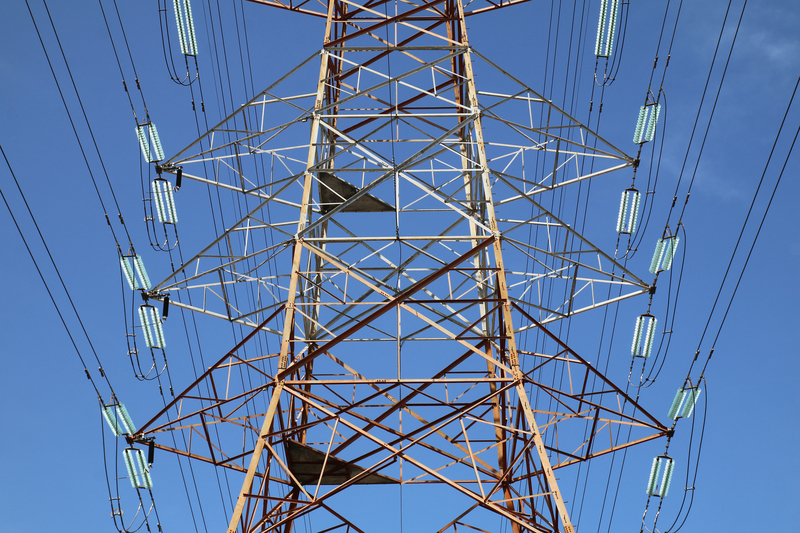Competition in electricity connections is integral to the market; here James Veaney, Head of Electricity Connections and Constraint Management at Ofgem tells Editor Laura Evans why
Connecting homes and businesses to the electricity grid is a great responsibility. That role belongs to Distribution Network Operators (DNOs), located across Great Britain. The DNOs own and operate the distribution network of towers and cables that bring electricity from the national transmission network into our homes. They are split into regions across the UK, comprising of: Electricity North West; Northern Powergrid; Scottish and Southern Energy Power Distribution; SP Energy Networks; UK Power Networks and Western Power Distribution. The 6 groups operate 14 different license areas between them.
Ofgem estimates that the value of the connections market is in excess of £500m per year, with hundreds of thousands of connections completed each year.
Over the last 5 years competition in this market has developed well. However, there is still further work to be done and Ofgem, the government regulator for gas and electricity markets in Great Britain, is responsible for encouraging competition in these markets.
Competition plays a vital role to ensure the consumer gets the most bang for their buck. Ofgem has done a lot of work in recent years to help speed up the process of getting connected, ensuring it is more efficient. In terms of the consumer, it’s about driving down the cost and getting the most out of the service provider.
“We have been really interested in how we can make the processes as efficient as possible and we see competition playing a critical role in achieving that,” explains James Veaney, Head of Electricity Connections and Constraint Management at Ofgem.
“DNOs have an obligation to offer terms for a connection. We’ve done a lot of work in recent years to speed up the process to make it more efficient and to help them to be more innovative in how they connect people to the network.”
Competition is essential in this kind of market to ensure consumers get the best deal for their service requirement. In 2010 the organisation launched an initiative called the Competition Test in response to concerns regarding competition in this market. “We told the networks that to pass this test they had to submit evidence to us of effective competition,” explained Veaney. “This process ran for 3 years until the end of 2013 with the intention that the companies would present us with an indication of the steps they had taken to try and facilitate competition in the market and the impact these were having.”
Following this review, the organisation did see improvements had been made in the level of competition. However, Ofgem still felt it was not satisfactory so a review of the market was carried out in 2014. This resulted in the first-ever code of practice for DNOs being brought in. The code sets out what they must do to improve competition and if it is not followed DNOs could face enforcement action from Ofgem.
“We identified a number of factors that we thought were relevant to enabling competition,” says Veaney. “Some of this was around customer choice, customer awareness, and willingness to enter the market.
“Some of these were within the DNOs’ control so in 2014 we issued our remedies to those issues and this involved introducing a new licence condition on the networks to have in place a code of practice which is enforceable by Ofgem.
“This Code of Practice was developed in agreement with the independent companies that compete against the DNOs. It basically sets out that DNOs must reduce the extent to which competitors depend on them for essential services and that where competitors rely upon the DNO for services, these have to be provided to them on the same basis as the DNO would provide them to its own connections business.”
The code requirements include:
Point of Connection
To complete an independent connection, providers currently rely on the DNO to state the location on its network where the new connection can link to. Some DNOs may take too long to determine the point of connection and provide technical information to help the competitor.
The code states that for the majority of straightforward connections the DNO must provide the same amount of technical information, on the same timescales, to a competitor as it would to its own connection business. The DNO must also allow an independent company that has the necessary technical accreditation to determine where it will connect, which will significantly speed up the process.
Accrediting engineers from independent connections companies
DNOs must ensure that once an engineer is certified to work on or design a connection in one region, the accreditation and authorisation is applicable across Great Britain. Designs produced by suitably qualified independent engineers will also not have to be approved by the DNO.
Inspection of connections work
DNOs must have in place an inspection and audit regime which is consistent for all connections they will adopt (both for where they have been responsible for the work or where an independent company has undertaken it).
Veaney is confident that following the review and the introductions of the code of practice that competition will improve. However, as with every sector and market there are challenges.
“Part of our work here has been trying to turn these companies into outward looking customer and stakeholder focused organisations. This has taken some encouragement to turn that around,” he said.
“Getting the organisations in a room with their competitors – some of whom have had a difficult history with those companies – to try and work collaboratively on a code of practice, which ultimately the DNOs know is enforceable against them. I think we’d anticipated it would more of a challenge.
“I think the DNOs recognised this was going to happen and that it wasn’t going to be an issue that was going to go away. Now we’re committed and we’ll be to going back to this in 2017 to review the market again, to see how well it’s working, and to ensure is it having the impact it should.”
James Veaney
Head of Electricity Connections and Constraint Management
Ofgem











